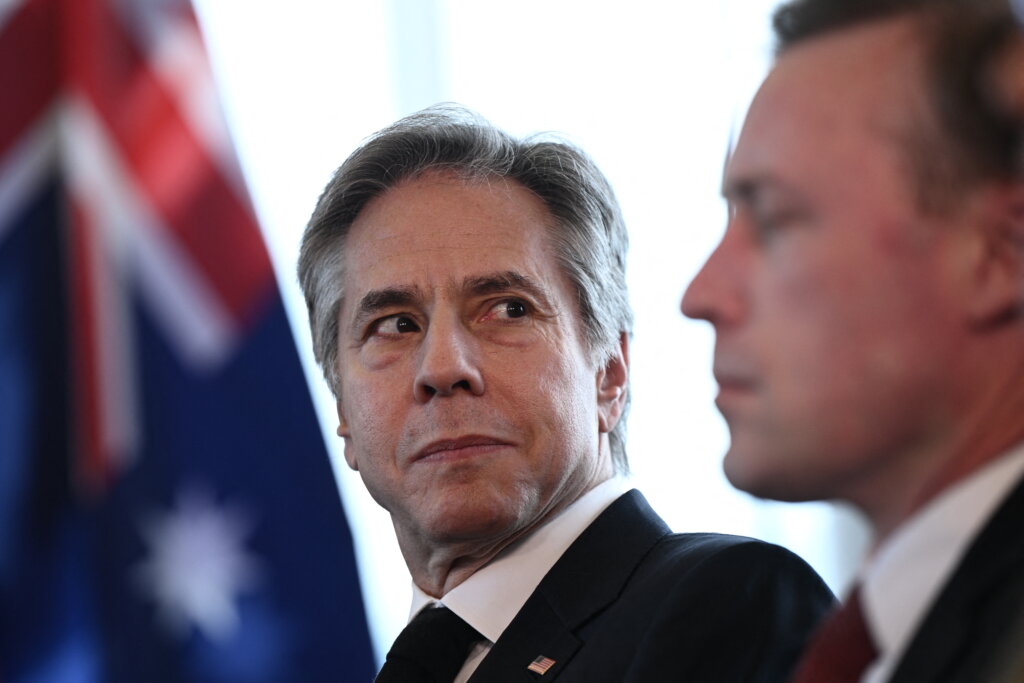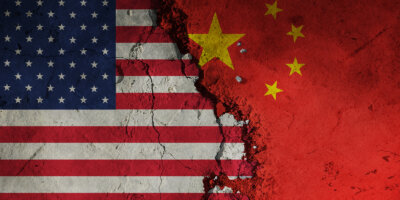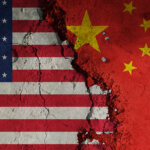
US Secretary of State Antony Blinken (L) shakes hands with China’s President Xi Jinping at the Great Hall of the People in Beijing on June 19, 2023. President Xi Jinping hosted Antony Blinken for talks in Beijing on June 19, capping two days of high-level talks by the US secretary of state with Chinese officials. (Photo by Leah MILLIS / POOL / AFP)
Blinken recently visited China. Here are the key takeaways
- Critical issues between the US and China remain unresolved.
- Blinken expects visits by other senior US officials to China “over the coming weeks.”
- Xi is hoping for the return of “healthy and stable” relations with the US.
When tensions between the US and China heightened in February this year over a potential Chinese surveillance balloon, US President Joe Biden immediately called off his Secretary of State’s planned trip to China. The US needed the trip to mend the rift with China for a more “constructive” relationship.
But as anticipated, the Americans were not giving up. On an early Sunday morning on June 18, 2023, Anthony Blinken arrived in Beijing – the first US Secretary of State visit to China in five years. The mission remained the same – to try to cool the exploding tensions that have set many worldwide on edge.
The closely watched two-day visit involved Blinken meeting with Chinese Foreign Minister Qin Gang on Sunday, followed by the Director of the Chinese Communist Party (CCP) Central Committee Foreign Affairs Commission Office Wang Yi on Monday. What caught global attention was his meeting with Chinese President Xi Jinping.
“President Biden asked me to travel to Beijing because he believes that the US and China have an obligation and responsibility to manage our relationship. The US is committed to doing that. It’s in the interest of the US, in the interests of China, and in the interest of the world,” Blinked said in his welcome note at the Chinese capital Monday.
While Blinken’s talks with senior Chinese officials were seen as a critical litmus test for whether the two governments could stop relations from continuing to plummet at a time of lingering distrust, his 30-minute meeting with Xi mainly was to echo his administration’s desire for “de-risking and diversifying” their economic relationships with China, not “decoupling.”
Had a candid, substantive, and constructive conversation with People’s Republic of China President Xi Jinping in Beijing today. We discussed a range of important issues, including the need to manage our relationship responsibly. pic.twitter.com/Q8kuMm6kly
— Secretary Antony Blinken (@SecBlinken) June 19, 2023
What did Xi and Blinken discuss about the US and China?
Blinken and Xi held talks at the Great Hall of the People, the grand building on the west side of Tiananmen Square, where the latter often receives dignitaries. “Mr. Secretary, welcome to China. Director Wang Yi and State Councilor Qin Gang have met or held talks with you at length, and generally speaking, the two sides have had candid (inaudible) discussions,” Xi said.
On a relatively friendly note, at the top of the meeting, Xi praised the US and China for progressing in the right direction. “The Chinese side has made our decision clear, and the two sides have agreed to follow through with the common understandings President Biden and I had reached in Bali. The two sides have also made progress and agreed on specific issues. This is very good,” Xi noted.
China and the US, the world’s two largest economies, have been under growing pressure from other nations to tamp down their governments’ increasingly contentious stances toward each other. The two countries have opposing positions on towering issues:
- The status of Taiwan, the de facto independent island that Beijing claims as its territory.
- The Chinese military’s growing footprint.
- The development of advanced technologies.
- Russia’s war in Ukraine.
- Human rights.
A report by South China Morning Post (SCMP) indicated that Xi, in what appeared to be a conciliatory tone, said China hoped for the return of “healthy and stable” relations with the US and that he believed the two countries could “overcome all difficulties and find the right way to get along.”
Xi even urged Washington to adopt a “rational and pragmatic attitude” when dealing with Beijing, put their positive statements into action, and work towards improving US-China ties. He even called for Blinken to contribute more positively to stabilizing China-US relations. The Chinese leader believes that since China respects the interests of the US and will not challenge or replace them, he expects the same from the US.
“Similarly, the United States must also respect China and not harm its legitimate rights and interests. Neither party can shape the other according to its wishes, let alone deprive the other of its legitimate right to development,” Xi said, according to SCMP.
Acknowledging that his visit to China was a step in the right direction, Blinken reiterated that Washington and Beijing recognized the need to stabilize the relationship. However, it was still far from solving every problem between the two countries. “Progress is hard, it takes time, and it’s not the product of one visit, one trip, one conversation,” he added.
He also anticipates visits by other senior US officials to China “over the coming weeks.” So far, US Treasury Secretary Janet Yellen and Commerce Secretary Gina Raimondo have indicated their hope to travel to China this year.
While it remains unclear whether high-level diplomacy can change the trajectory of relations, US officials say they hope, at the very least, that such talks will allow each side to see more clearly the intentions of the other and avert miscalculations.

On an early Sunday morning on June 18, 2023, Anthony Blinken arrived in Beijing – the first US Secretary of State visit to China in five years. (Photo by Brendan SMIALOWSKI / AFP)
Harsh reality for the US
While the meeting with Xi was a gentle end-note to Blinken’s visit, the US top official also heard some harsh words over his two-day visit. In his meeting with Wang on Monday morning, the CCP Central Foreign Affairs Office director delivered a blunt message during a three-hour session at the Diaoyutai State Guesthouse, blaming Washington for recent tensions.
According to the Chinese government, Wang said Washington should cooperate with Beijing instead of “hyping” the “China threat theory.” He even repeated that Washington must lift sanctions on China and stop suppressing the country’s technological development. Tha’s not all: Wang accused the US of “recklessly interfering in China’s internal affairs” on issues such as Taiwan, which the United States supplies with weapons.
While American politicians have tried to portray the Biden administration as soft on China, Biden and his aides have enacted tough, sweeping commercial policies such as export controls to limit China’s growth in strategic sectors, notably semiconductors. The US had even strengthened military cooperation with other countries across Asia.
What’s next in the US-China tech war?
Truth be told, the US initiated most of the technology or trade tussle between both powerhouses. The tech war started as a trade dispute and soon morphed into a battle for leadership in core technologies like 5G, artificial intelligence (AI), and semiconductors.
With its long history of R&D and invention, the US has been the global tech leader for decades, but that position has been challenged by China, which has thrown its total weight – and tens of billions in state funding – behind efforts to catch up to the US.
But since Washington began blocking China’s access to core US-controlled technologies like semiconductors, Beijing doubled its efforts to “de-Americanise” its supply chain. Top officials have begun earnest dialogue but the tech war won’t end anytime soon.
What remains certain is that enterprises in different economic sectors worldwide are bound to get caught in the crossfire between the world’s two largest economies.
READ MORE
- Next-gen CX is based on customer communication management systems.
- Enhancing Business Agility with SASE: Insights for CIOs in APAC
- 3 Steps to Successfully Automate Copilot for Microsoft 365 Implementation
- Trustworthy AI – the Promise of Enterprise-Friendly Generative Machine Learning with Dell and NVIDIA
- Strategies for Democratizing GenAI


